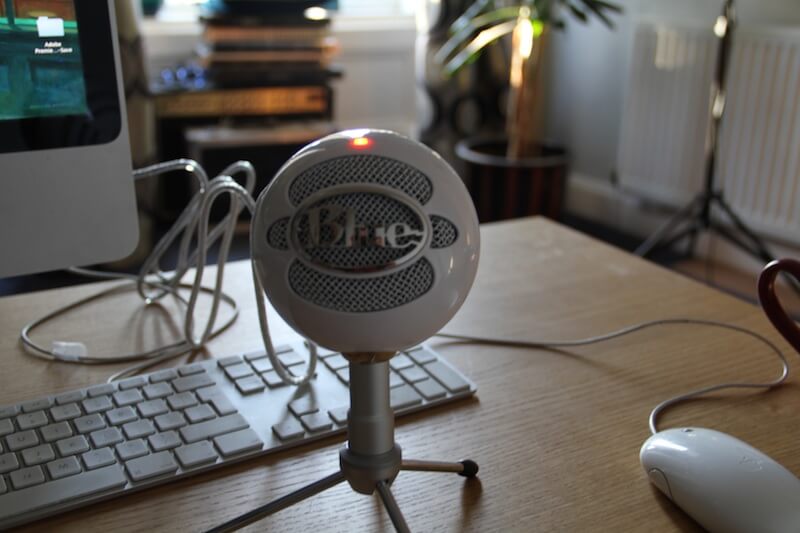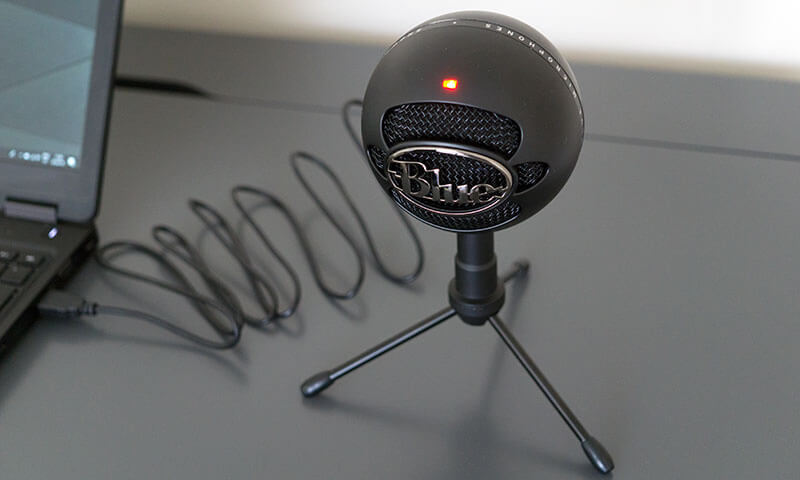If you learn it hard to connect your mic to your personal computer, you might as well consider utilizing a USB microphone. Needless to say, USB microphone technology choose to go a considerable ways since the initial USB mic rolled out in the market. Now, USB mics like the Blue Snowball microphones are already competing well with other mics.
Moreover, USB mics are relatively simple to use because they are plug-and-play in comparison to other mics that necessitate an audio interface to produce them usable with the computer. The Blue Snowball, for instance, offers convenience for those who wish to record narration or participate in audio or vocal projects using their computer.
Contents
Setting Up the Blue Snowball Microphone
Setting up the Blue Snowball microphone isn’t difficult. As mentioned above, it is just a plug-and-play device that you could quickly hook to your personal computer utilizing a USB cable. Therefore, even an inexperienced user with this mic can quickly set it up. Nevertheless, if you like the optimal settings for your Blue Snowball Mic , you might as well employ the next tips:
Initial Settings
You will need to make sure that the USB cable is plugged firmly to the Blue Snowball microphone at the onset. Then, plug the USB cord’s other end to your computer’s USB port. As you hook the mic to the computer, you might find a red light on the microphone’s top.
This glowing red light will indicate that power visits your microphone. In addition it indicates that the mic has linked to your computer. At the microphone’s back, you may find three recording settings. You will need to choose from one of these simple three settings before you should use your microphone.
Selecting a Setting
You can make the setting that you want to use from these selections at the trunk of the microphone. You can just slide the switch to your chosen amount of a setting. Afterward, you can begin recording applying this microphone.
But what do these three settings indicate? Well, the three settings at the trunk indicate the numbers 1, 2, 3. These numbers reference the next positions:
Position 1: is sold with Cardioid Polar Pattern. This first position is ideal for recording narration and audio projects. Moreover, its best applications include speech, vocals, and podcasting. This polar pattern can pick up sound from its front and is perfect for podcasting, recording vocals/instruments, and game streaming.
Position 2: on one other hand, has a cardioid setting with a -10dB pad. It is perfect for music recording and is best for live music and loud sound sources. This setting allows you to reduce steadily the mic’s sensitivity, allowing loud vocalists and instruments ahead out crystal clear and free from distortion.
Position 3: however, carries an omnidirectional polar pattern. It is perfect for recording multiple sourced elements of sounds in large room settings. It is fantastic for conferences, environmental recordings, and interviews.
Also read: Blue Snowball vs Blue Snowball Ice
The Best Snowball Mic Settings for Different Applications
The Blue Snowball is perfect for singers as long as they understand how to set it up for optimal performance and knows just how to angle the mic. You are able to position the mic around four inches far from the mic’s diaphragm when you yourself have a huge vocal sound.
Then, adjust the input volume properly in your PC settings. Moreover, you should use a sonically high-quality neutral pop filter like the Blue Pop to regulate the plosives and protect the diaphragm.
You are able to tilt the microphone upward a bit toward your forehead for a much better head tone and more projection. You may also angle the mic toward the mouth area for maximum intelligibility and brightness. Then tilt it down toward your chest for robust lows and smoother highs. It is going to be best to start with position one or position two for a start. This way, you are able to activate the -10dB PAD.
Acoustic Guitar
The Snowball comes with a neutral tone which is most effective for capturing acoustic guitar’s sound. You are able to position the diaphragm with this mic facing the guitar’s neck where it joins the body. From the beginning, keep your mic near the instrument while tilting the diaphragm toward the guitar’s soundhole to recapture the low frequencies and pick other sounds.
You may also move the mic nearer the soundhole if you want to recapture more lows. On one other hand, you are able to move the mic far from the soundhole if you wish to capture more high frequencies.
Electric Guitar
The Blue Snowball mic , using its solid bottom end and neutral response, is perfect for a distorted and clean guitar amp. If you wish to capture more highs, you are able to angle the diaphragm toward the speaker’s center, toward the speaker cone’s edge to obtain a fuller sound with an even more significant low end.
Moreover, you are able to move the mic towards the speaker cone’s outer edge for distorted or overdriven tones. You may also back it a foot far from the amp to make a mixture of the room tone and direct pickup sounds and soften the highs.
Drums
The Blue Snowball comes with a excellent transient response, and this feature is sold with many benefits when miking the drums. You are able to begin positioning the mic up to four inches above the hoop or rim for hand drums. The mic should really be toward the stick of the player or his hand for picking up more definition and attack.
Orient the diaphragm more toward the shell to soften the hand drum’s sharp attack and grab an even more bright and crackling sound from the snare drum. You are able to likewise move the microphone nearer to the drum for more low end and shell resonance. However, moving it far from the drums allow for more interaction of environment and drum sounds, for an airier capture of sound.
Streaming Application Settings
If you participate in recording Twitch streams, you may find the Blue Snowball a great choice for this kind of application. Besides, it is perfect for YouTube videos, though it might take you a while to reach such applications’ideal settings. You may also make use of this mic for both streaming and recording. Needless to say, the right settings for such applications are achievable, and here are some tips that you could follow to reach such a high level of results:
Boost Your Microphone : This mic’s effectiveness in providing you the best capture of your voice depends how far you position the mic from your lips. So, it may help if you move the mic nearer to your mouth. In case you need to position the mic farther far from the mouth area, you need to improve the mic.
Turn the boost slowly to figure out the sweet spot for your application. You may also adjust the mic’s volume on most of your window as you try to improve it slowly. Eventually, you may find the sweet spot wherein your voice will sound crisp and clear.
Suppress the Background Noise: It may also be helpful to add a Noise Suppression Filter aside from the Noise Gate Filter. The Noise Suppression Filter is useful with the Noise Gate, preventing background noise like those coming from passing cars and fans.
The Noise Suppression Filter’s default setting is at 30, but you are able to still try to keep it at 25 to figure out what works for you. You may also use other recording programs, depending in your preference.
How To Upgrade Your Snowball Microphone Setups
You may also upgrade your mic utilizing the Snowball compatible boom stands and adding some noise reduction filters. This way, you are able to optimize your mic for picking up only your voice. Upgrading is going to be best, particularly if you are live streaming through YouTube or Twitch.
You can certainly do this by going to the main microphone menu to get the Filters box option.Alongside Filters is the cog button.Select that to open up another menu. Select the plus sign to add the filters you’re desirous of. You may also add a Noise Gate filter to boost audio quality.
The Noise Gate will tell your mic to shut off once you don’t talk, and it will only grab sounds after you talk. This way, you are able to prevent the mic from picking up ambient sounds. It can also stop the mic from capturing and recording sounds below the specified decibel level.
It’ll indeed prevent the capture of background noises like those coming from fans, keyboard clicks, and other background noise. We have added an article about Blue Snowball Microphone Drivers.
Put in a Shock Mount to Your Mic
The Snowball comes with a unique swivel mount that you can see at the mic body’s bottom center. You are able to ensure that the mic is installed on the desktop tripod to make certain it is sturdily supported. If you wish to reduce steadily the low-frequency rumble, you are able to mount it on the Blue Ringer.
Needless to say, the Blue Snowball Mic is durable, nonetheless it is much better to make sure that it will not fall as a result of inadequate support. With proper positioning of the tripod, you are able to prevent it from tipping over. If it’s properly mounted, it is simple to pivot the mic back and forth for better positioning and angling.

Conclusion
The good thing about USB microphones like the Blue Snowball Microphone is they attempt to facilitate the procedure of connecting mics to computers. The USB mics have gone a considerable ways since the 1st USB mic was rolled out. At present, they’re becoming more and more reliable, and I think, soon, they will be very much on par with one other forms of microphones.
The initial Snowball mic was introduced 15 years back, and the present Blue Snowball microphone is a far cry from the initial one. At present, the Snowball mic has many supporters. It might have its downsides, but with proper tweaking of settings , you are able to achieve a top efficiency and effectiveness level for this mic.




